Color and anatomy of incisors in young people
Machine translation
Original article is written in RU language (link to read it) .
The appearance of young people has certain characteristic features. The human eye is capable of quite accurately determining the age of another person by his appearance in a split second. A smile is an important component of a person’s appearance; young teeth have their own characteristics. A healthy smile should be age-appropriate and give a harmonious appearance. A harmonious smile is a beautiful, healthy smile. By changing the smile, you can try to “reset” several years for the patient. Healthy young teeth are a sign of youth throughout the body.
Learn more about aesthetic restorations at a young age at the webinar Biomimetics in pediatric dentistry .
Severely damaged, cracked, worn, discolored teeth in many cases require complex restoration. Sometimes you have to tinker with healthy teeth to give your smile a beautiful look.
The question arises: what are the characteristics of young teeth? By what signs can we immediately determine the age of teeth?
The first feature of young teeth is their length. At a young age, the front teeth should not show signs of wear. They have maximum length and an intact cutting edge. In adults with an open bite, the same incisal edges of the teeth can be observed.
Young teeth have an unchanged shape, scalloped edges, rounded corners and open embrasures. Young teeth have a lot of enamel, so the color of dentin, which has high fluorescence, is not so pronounced. The thick layer of enamel on young teeth looks milky. There is no exposed dentin in the cervical area of the teeth. There is no abrasion, erosion, abrasion or a combination of these factors. Therefore, there is no shortening of the tooth; the cutting edge consists entirely of enamel up to the beginning of the dentin mamelons.
The phenomenon of opalescence is pronounced, giving the teeth a shine. Due to different light refraction of enamel structures, reflection and absorption of light, different colors are visually perceived on the surface of the teeth. The color of teeth in young people is lighter due to the absence of secondary and tertiary dentin and enamel porosity. Numerous structural elements (ridges, perikymata) are visible on the surface of high-quality enamel.
The clinical case described below demonstrates the step-by-step restoration of a tooth to give it a youthful appearance.
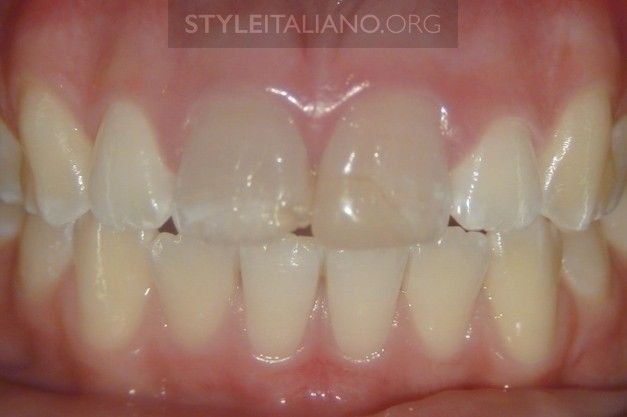
Photo 1
Initial situation. A 17-year-old patient suffered a trauma to her front teeth several years ago. The teeth began to change color. The girl was seen by endodontist Marga Ree (photo courtesy of M.Ree).

Photo 2
The initial radiograph shows bone loss in the apical region of both incisors (photo courtesy of M. Ree).
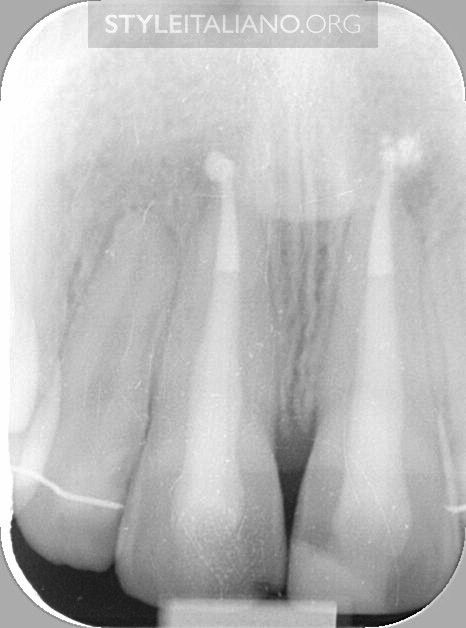
Photo 3
Root canal treatment was performed. After internal bleaching, fiberglass pins are installed (photo courtesy of M.Ree).
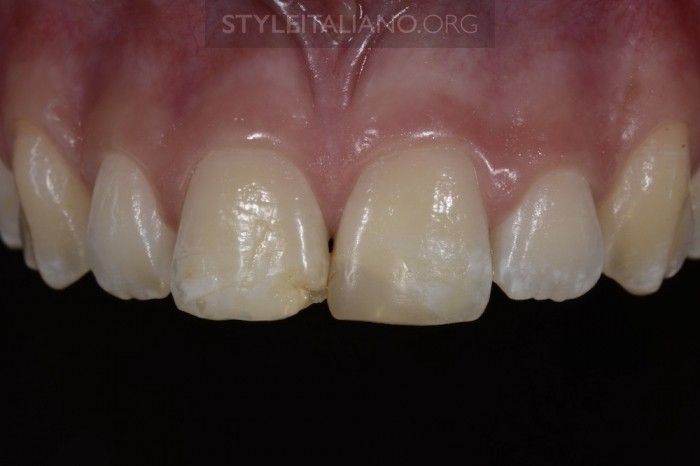
Photo 4
Endodontic treatment and internal whitening have significantly improved the color of teeth.
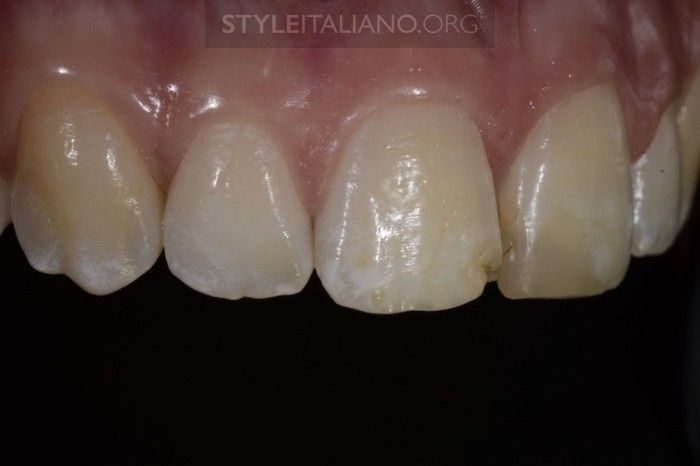
Photo 5
The patient wanted to restore her teeth in such a way that there would be no signs of injury. Obviously, the color of the old composite restoration had to be changed, and the shape of the two central incisors, which did not match the rest of the anterior teeth, also needed to be changed.

Photo 6
The patient had undergone orthodontic treatment in the past, so a difference in the root and coronal angulation of teeth 11 and 21 can be seen.
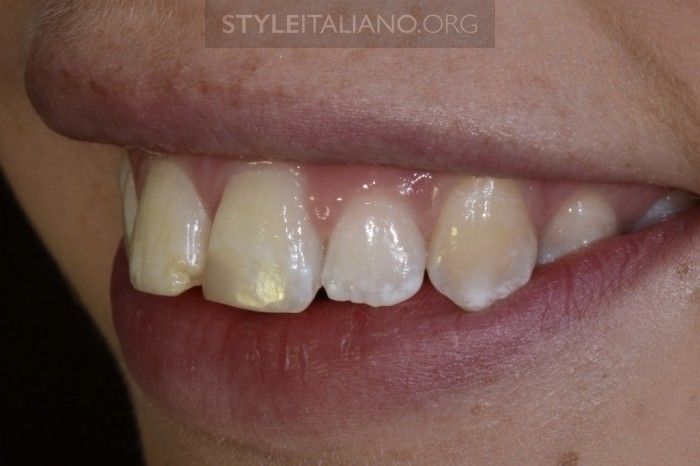
Photo 7
Together with the patient, it was decided not to sacrifice healthy enamel or dentin tissue to correct the angulation. The goal of treatment included creating symmetry of the central incisors.

Photo 8
The existing anatomy of the anterior teeth was consistent with a young age.

Photo 9
To create a wax-up, impressions were taken on the models and preoperative photographs were taken.
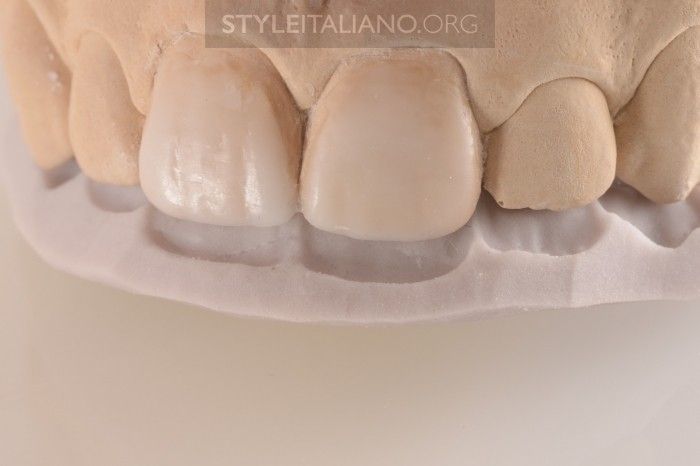
Photo 10
A silicone key was made to control the required tooth sizes during treatment.
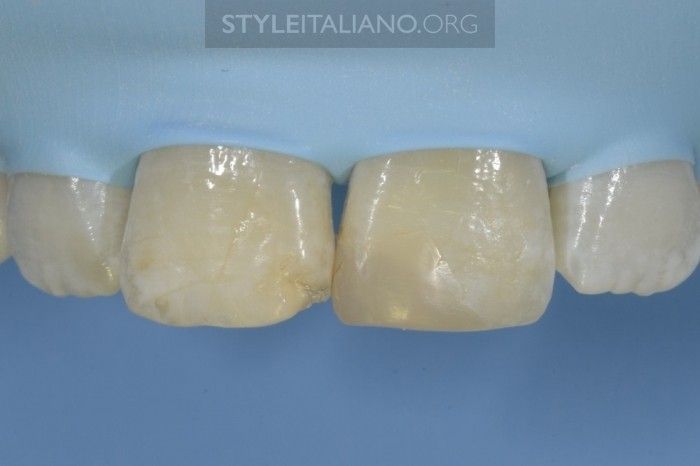
Photo 11
Insulation was carried out with a rubber dam. Please note color unevenness.
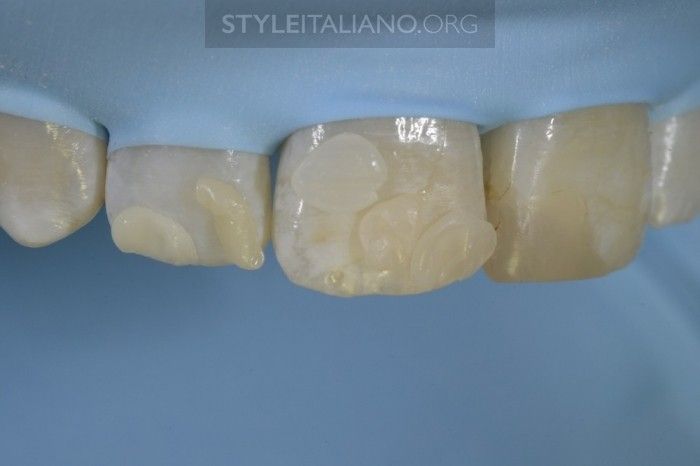
Photo 12
Ideally, the color should be selected in the mouth before applying the rubber dam to moistened teeth. Before analysis, the composite is light cured. It should be borne in mind that dehydration of teeth significantly changes their color within a few minutes.

Photo 13
Removing the old composite restoration exposes enamel cracks that must be made invisible in the future.

Photo 14
The Fissura instrument marks the transition from the restoration to the tooth to prevent overestimation on the palatal side, the correction of which requires a significant investment of time.
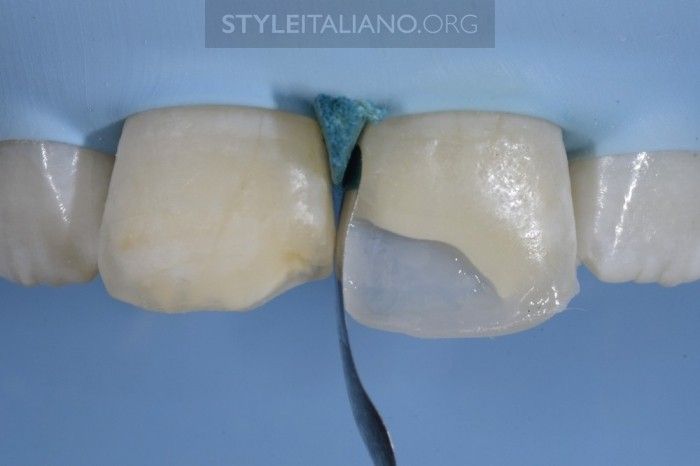
Photo 15
The palatal wall is built with an enamel composite. This first layer reaches the vestibular surface, which means its color is important for obtaining the desired result in the cutting third of the tooth. Young teeth are characterized by complete preservation of the enamel on the cutting edge. If there is a desire to artificially enhance the halo effect, it can be emphasized by adding a very thin layer of dentin composite.

Photo 16
The matrix helps create a rounded contour of the proximal wall. This stasis contour gives a youthful appearance to the teeth as it provides the correct open embrasure.
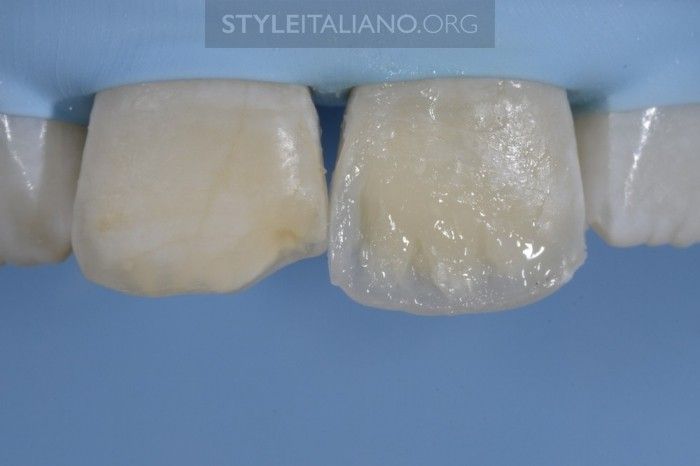
Photo 17
The dentin layer is applied in the form of three mamelons, in accordance with the development of the tooth ridges. In older teeth, mamelons are not as pronounced. Next, to recreate the opalescence and translucency of natural enamel, an enamel composite with a high degree of transparency is placed between the mamelons. The hydroxyapatite structure of natural enamel is characterized by some reflection and absorption of light. Vision perceives reflected light in a bluish color. The translucent enamel composite also behaves in the spaces between the mamelons, which contributes to the appearance of the halo effect and imitates natural enamel. Natural enamel has the highest opalescence rate even compared to the latest composites.
Dentin in young teeth has low saturation, so it is better to choose lighter shades. In this case, after endodontic treatment, the teeth have lost a lot of dentin in the process of forming access to the canals, which also must be restored. The amount of dentin affects the appearance of the tooth. Restoration of a tooth using fluorescent dentin will help restore its natural brightness.
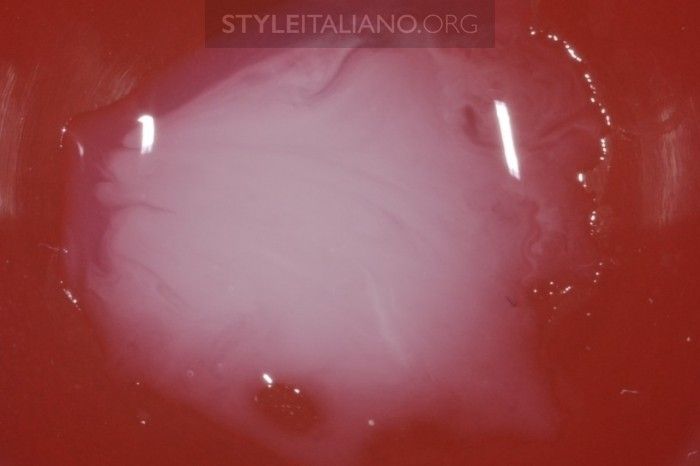
Photo 18
“Elixir of Youth” is a white effect obtained when mixed with modeling fluid, suitable for use in the final enamel layer to emphasize the large volume of enamel and sometimes the “milky” appearance of young teeth.

Photo 19
Tooth 21 was restored with a final layer of white enamel composite.
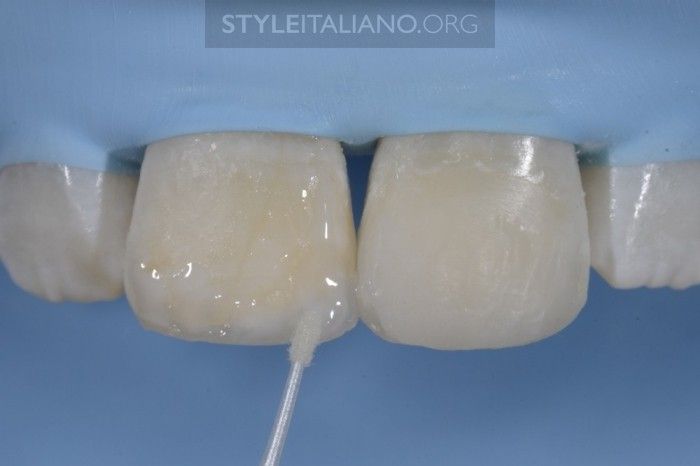
Photo 20
Applying the “elixir of youth” before the final coat.
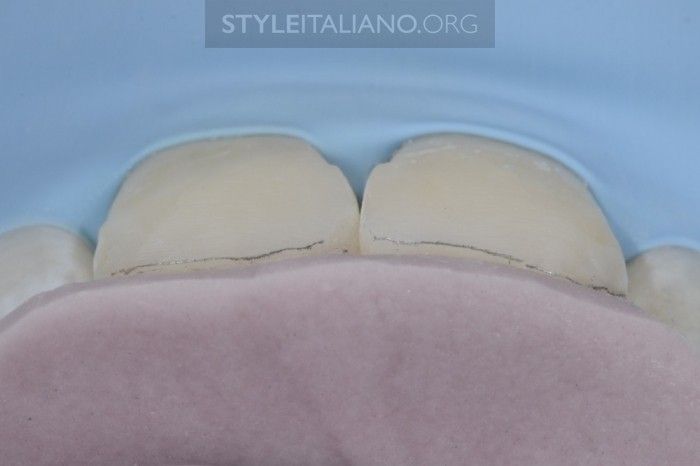
Photo 21
First check using a silicone wrench after applying the final layer of composite. First of all, the thickness of the cutting edge is controlled.
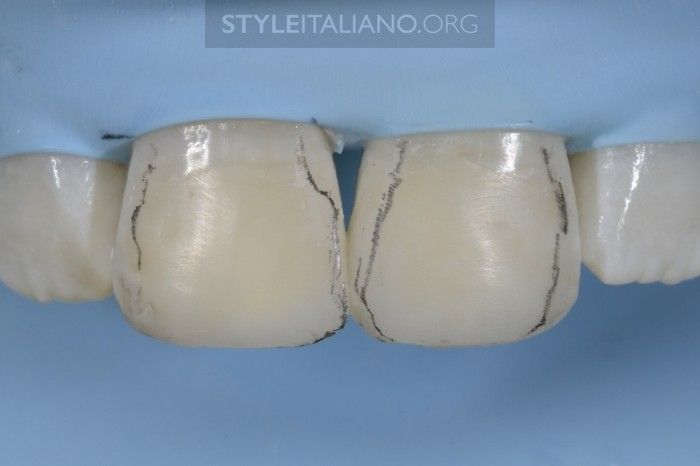
Photo 22
The transition lines of the surfaces are marked with a pencil and adjusted so that they become straight and symmetrical.
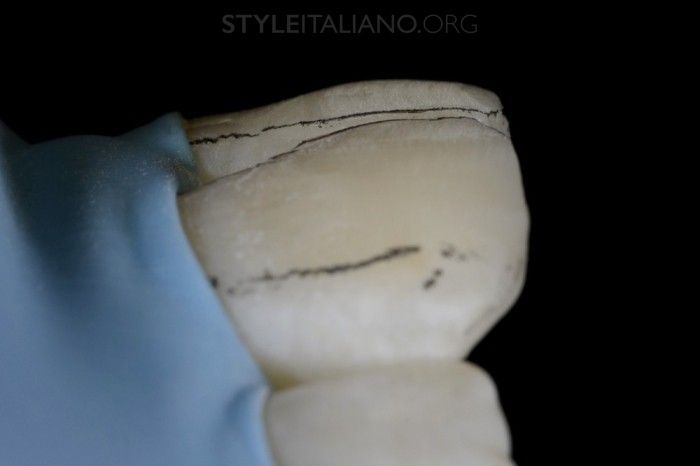
Photo 23
You can check the three planes from a side view. A smooth arched line should be visible. In this case, a slight correction along the midline is necessary.

Photo 24
The primary shape has been adjusted. It should be noted that dehydration of natural enamel causes the composite to appear yellow. Now the teeth are ready for further rejuvenation.
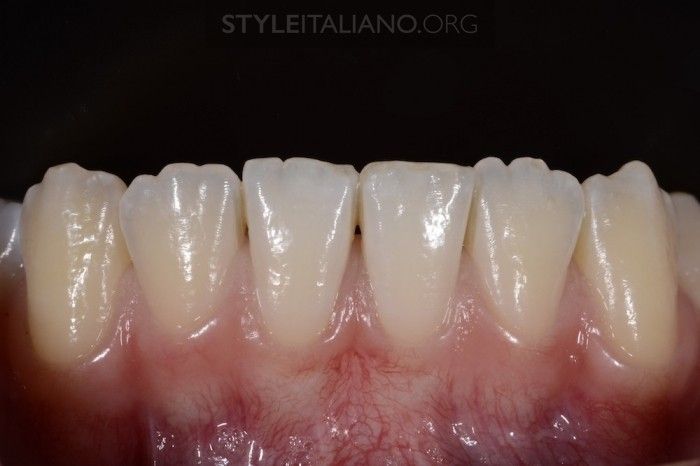
Photo 25
Unaffected lower incisors and canines exude youth. Let them serve as inspiration! The central lower incisors are already somewhat worn out.
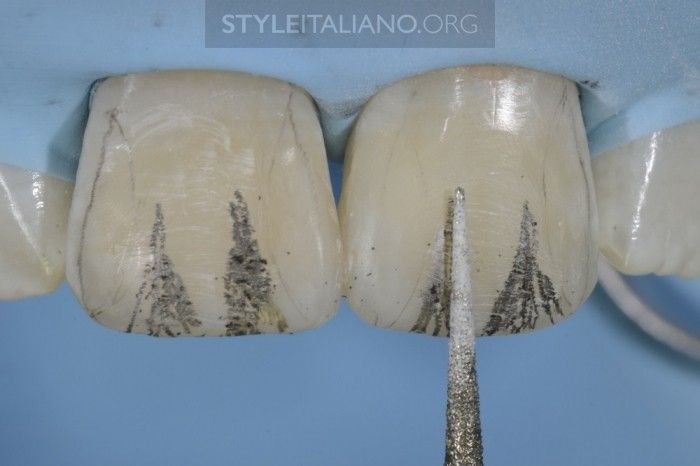
Photo 26
The surface structure is created with a diamond bur at low speed without water.
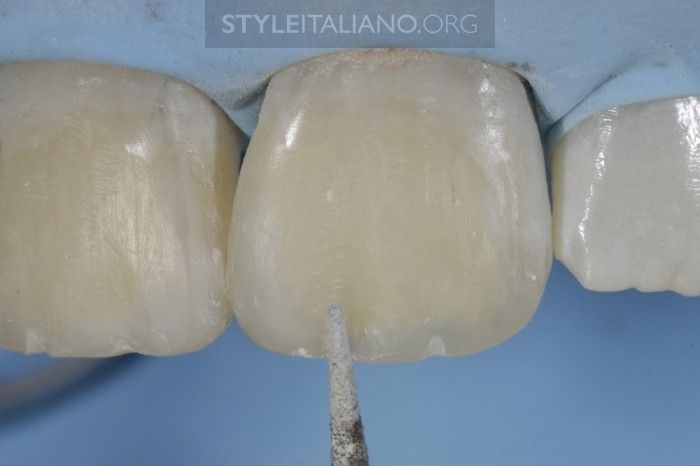
Photo 27
To create a beautiful scalloped cutting edge, tilt the bur slightly.
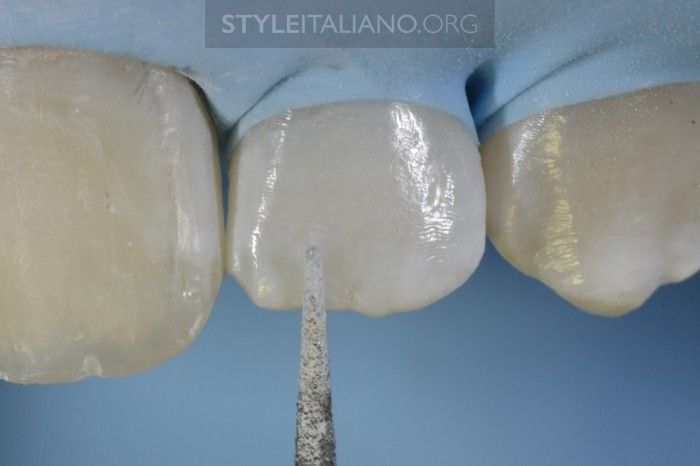
Photo 28
Touching the side incisor with the idle bur helps determine the angle at which you need to work with the central tooth.
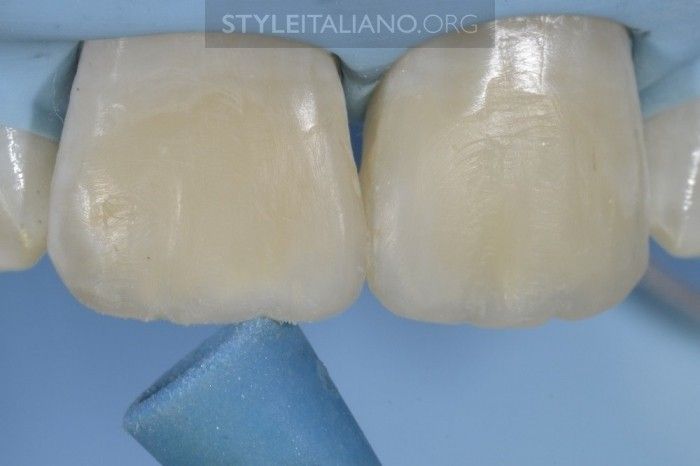
Photo 29
For a more natural look, bur marks can be smoothed with a rubber polishing cup.
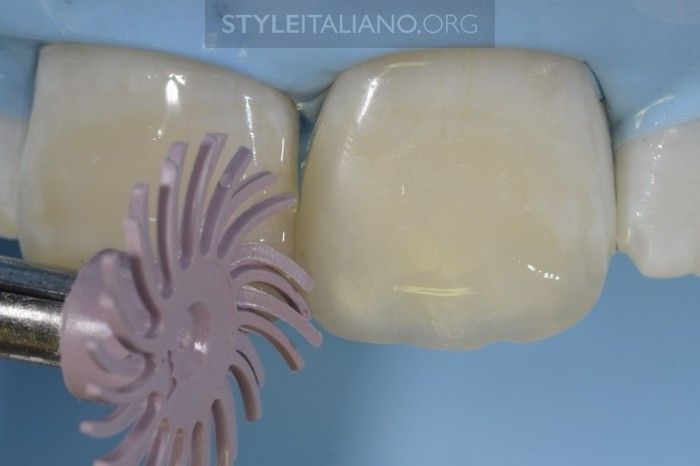
Photo 30
Final stages of polishing.
Conclusion
Recreating the youthful appearance of teeth involves a combination of several factors. It starts with the inspiration your patients give you. Pay attention to their teeth or pictures of what they were like. Then you can begin the “search for youth.” With knowledge of the anatomy and characteristics of a tooth, it can be almost completely restored after damage, abrasion or trauma. We add the word “almost” out of respect for the beauty of nature. But trying to copy nature is also a very good option!
More up-to-date information about the nuances of treating young teeth in the online course Daily manipulations of a pediatric dentist: from communication to restoration .
http://www.styleitaliano.org/